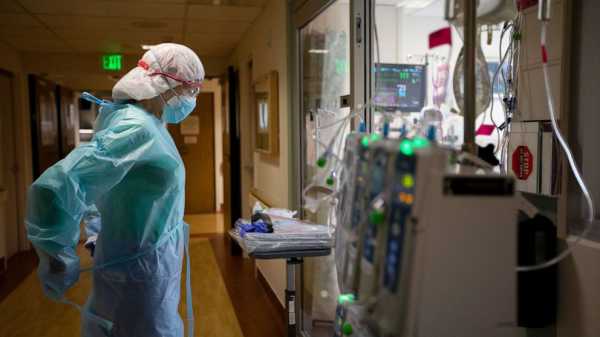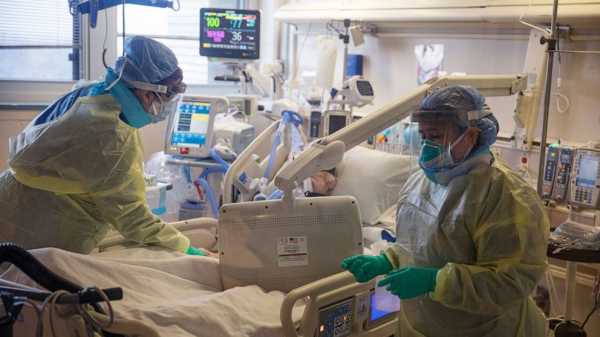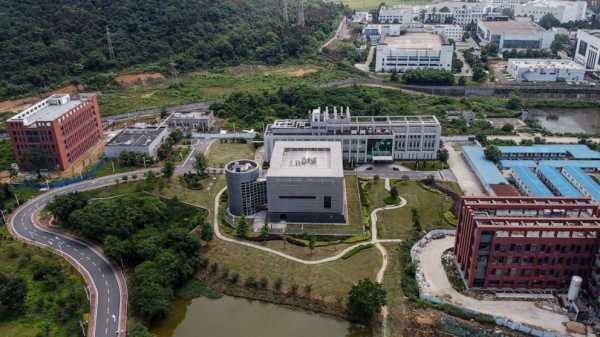While no firm conclusion has yet been made among health and government officials as to where COVID-19 came from, the U.S. Energy Department has now reportedly indicated it believes the virus was most likely the result of a lab leak in China — one of two prevailing theories under investigation along with natural human exposure to an infected animal.
The view of the Energy Department, which oversees a network of national labs, some which conduct bioresearch, was reported Sunday by The Wall Street Journal based on a classified intelligence report but has not been confirmed by ABC News.
People who read the report said the assessment was made with "low confidence," according to the Journal, referring to the lowest of three confidence intervals in the intelligence community.
It's the latest development in the ongoing work, in the U.S. and internationally, to determine where COVID-19 came from: to both trace back the virus in order to hold any responsible parties to account and to understand its inception in order to prevent the next pandemic.
But with no "smoking gun" and limited access to raw data, discussion of the science has played out in a haze of circumstantial evidence.
At the same time, the virus' origins have become a contentious wedge issue at home while the Chinese government vehemently denies COVID-19 could have come from one of its labs in Wuhan.

Nurse Joan Pung, right, dawns her isolation gowns in the hallway inside the ICU at Providence St. Jude Medical Center Christmas Day on Dec. 25, 2020 in Fullerton, Calif.Francine Orr/Los Angeles Times via Getty Images, FILE
A spokesperson for the Energy Department did not comment Sunday on The Journal's new article but said in a statement to ABC News that the department "continues to support the thorough, careful, and objective work of our intelligence professionals in investigating the origins of COVID-19, as the President directed."
A spokesperson for the House Oversight Committee said in their own brief statement that the Office of the Director of National Intelligence had "provided a response to Oversight Committee Chairman James Comer and Select Subcommittee Chairman Brad Wenstrup's February 13th letter requesting information about the origins of COVID-19 and we are reviewing the classified information provided."
The White House's national security adviser, Jake Sullivan, said in an appearance on CNN on Sunday that he could not confirm or deny the Journal report but that “right now there is not a definitive answer” from the intelligence community on where COVID-19 started.
"Some elements of the intelligence community have reached conclusions on one side, some on the other. A number of them have said they just don't have enough information to be sure," Sullivan said. "Here's what I can tell you. President [Joe] Biden has directed, repeatedly, every element of our intelligence community to put effort and resources behind getting to the bottom of this question."
MORE: Scientists demand new investigation of COVID-19 origins
"If we gain any further insight or information, we will share it with Congress, and we will share it with the American people," Sullivan said.
The White House declined on Sunday to say if Biden had been briefed on the Energy Department's view, referring to Sullivan’s comments.
In 2021, the president launched a 90-day push for the U.S. intelligence community to "redouble their efforts" to find a more definitive conclusion regarding the source of the virus.
In a declassified summary of that work, released in August 2021, U.S. intelligence agencies said they remained "divided on the most likely origins of COVID-19" but that the two key hypotheses remain possible: either natural exposure to an infected animal or an accidental lab leak.
Consensus among top officials in the Biden administration has similarly been that the pandemic originated in one of those ways.

Two nurses assess the breathing ability of a COVID-19 patient using oxygen on the Intensive Care Unit (ICU) floor at the Veterans Affairs Medical Center on April 21, 2020 in Brooklyn, N.Y.Robert Nickelsberg/Getty Images, FILE
Four elements of the U.S. intelligence community said in 2021 that they had "low confidence" COVID-19 was initially spread from an animal to a human, while one element assessed with "moderate confidence" that the first human infection was the result of a "laboratory-associated incident, probably involving experimentation, animal handling, or sampling by the Wuhan Institute of Virology," and pointing to the "inherently risky nature of work on Coronaviruses."
The agencies, however, generally agreed that the virus was most likely not developed as a biological weapon and that China's leaders did not know about the virus before the start of the global pandemic.
This analysis marked something of an evolution from the earliest prevailing view after the pandemic began in early 2020 when, despite some fringe skepticism — often emanating from voices with a long record of criticizing China — the idea that COVID-19 jumped from animal to human somewhere in nature became the overwhelming consensus.
Political voices in favor of the lab-leak theory, particularly from former President Donald Trump, served to polarize the issue further and largely pushed the scientific community away from a willingness to consider that possibility.
The U.S. intelligence agencies said in their 2021 summary that baring new information, a more definitive explanation would not be possible without Beijing's cooperation.
"Origins tracing is a matter of science," Chinese Foreign Ministry Spokesperson Zhao Lijian said following the report's release. "China always supports and will continue to participate in the science-based origins study."
On Monday, Mao Ning, another Chinese Foreign Ministry spokesperson, said finding the origins of the virus "should not be politicized."
"China has always actively supported and participated in global scientific traceability laboratory interventions, that is, it is impossible for China and WHO to be a joint expert," she said. "Authoritative scientific conclusions drawn from field visits to relevant laboratories in Wuhan and in-depth exchanges with relevant researchers, and accurately reflected in the joint traceability research report of the Chinese WHO have also been widely recognized by the international community and the scientific community."
She added, "The parties concerned should stop speculating on the arguments leaked by the laboratory and stop discrediting China from politicizing the traceability issue."

This aerial view shows the P4 laboratory (C) on the campus of the Wuhan Institute of Virology in Wuhan in China’s central Hubei province on May 27, 2020. Opened in 2018, the P4 lab conducts research on the world’s most dangerous diseases and has been accused by some top US officials of being the source of the COVID-19 coronavirus pandemic.Hector Retamal/AFP via Getty Images
A joint World Health Organization-led team had presented a range of options in its own March 2021 report, calling a lab leak "extremely unlikely" but offering pathways for further investigation.
Team members voiced frustration with the lack of cooperation from the Chinese government — echoed in international criticism that politics had stymied science.
Since then, the WHO has become increasingly receptive to the possibility that the virus resulted from a lab leak. In July 2021, WHO Director-General Tedros Adhanom Ghebreyesus acknowledged that ruling out a lab leak theory was "premature" and recommended audits of the Wuhan labs in further studies.
China's subsequent rebuff left the WHO to proceed without them as part of the U.N. agency's recommended phase two study.
Sourse: abcnews.go.com






